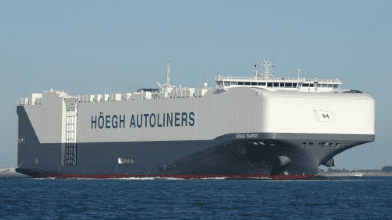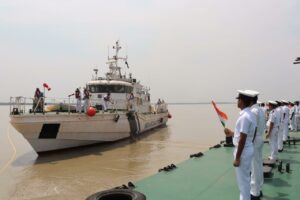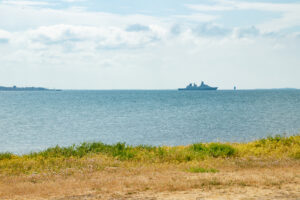Norway´s RoRo transportation provider Höegh Autoliners with around 40 ships gave has revealed its commitment to take proactive measures to reduce the risk of fire.
The plan was announced today as the company claims that safety is a top priority both for its existing fleet, and when designing its new Aurora class vessels.
“Together with a clear decarbonisation target, safety is our top priority both on our existing fleet and when designing our new Aurora class vessels. Fire safety has been a focus area and part of the design work from day one,” says the COO of Höegh Autoliners, Sebjørn Dahl.
The company Höegh Autoliners, as announced by the top management, focuses both on pre-emptive measures and emergency plans to help mitigate danger, and gives some examples of its plan which include:
Identifying Fire Triggers
· Recent fire incidents aboard EV-carrying vessels have brought attention to factors such as thermal runaway, saltwater intrusion, and compromised battery cells or components. Industry stakeholders, insurers, and safety experts have underscored the need for vigilance.
What Höegh Autoliners do to mitigate risk
· At Höegh Autoliners focus is played both on pre-emptive measures and emergency plans to help mitigate danger. To improve fire detection and the ability to handle a possible fire the company has among other measures implemented an extended number of fire zones, and installed heat and smoke detecting cameras and fire blanket stations on all cargo decks. It has more than the Class required amount of CO2, which serves as a highly efficient fire extinguisher on board its vessels.
Sebjørn Dahl says that “We’ve also improved the onboard digital platform. This enables us to include early warning if any loaded unit would send out notification of anomalies such as elevated battery temperatures”.
Compliance and Safety procedures
· Höegh Autoliners currently not accepting transportation of second-hand electric vehicles as they may represent higher risk. As the company claims, Höegh Autoliners have a close collaboration with DNV which enables the company to be up to date, and informed on the latest research and data on fire safety.
· Prior to loading, the company´s fire risk management includes optimized procedures. The aim is to maintain high-voltage batteries in electronic and hybrid cars charged ideally below 30 percent and not above 50 percent, effectively mitigating the risk of fire incidents. This deliberate approach curtails energy density on the vessel’s deck, thereby reducing the potential severity of fires, as Höegh Autoliners says.
Experienced personnel
· Höegh Autoliners claims that has developed procedures and best practices for cargo handling, to minimise the risk of damage.
“Our crew are undergoing regular refresher training on fire safety and firefighting techniques. In cooperation with local training centres we are focusing on hands-on fire-fighting techniques as well as safety procedures for high temperature fires. We conduct regular drills so that the crew are very familiar with their duties, location of equipment and use of the onboard equipment and systems. This will ensure that the crew have the capabilities to apply the correct firefighting method depending on the situation,” says the RoRo transportation provider Höegh Autoliners.



